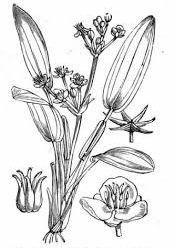It is nearly springtime and Chris Wege and I have just had a meeting with the ecologist, Rod, and the eco-hydrologist, Curt, hoping to find a route through the tangle of problems and solutions towards a plan to improve the pond for wildlife whilst also making it much more attractive to the village.
We have had a series of potential plans, each modified on closer inspection. In the last article it was considered that solving the water quality problem had become too difficult and contentious. The vision was now cleared for a new objective; the establishment of suitable vegetation and its protection until it is established enough to sustain itself against the twin devourers, the ducks and the fish. We knew it would have to be the fish of course, but how?
So we had the meeting with the ecologists and after much experienced observation of the pond - a typical village pond indicating all the deficiencies for wildlife that their recent histories have often made them suffer from - we closed in on the way forward. The best way is to remove all the fish, ideally by draining the pond.
Silence.
Or, we could control them by creating fish free areas in which the plants could thrive. The pond is suitable since much of it shelves gently and we could design areas of the pond in which we would build natural barriers of woven hazel and shingle within which to plant and nurture suitable plant species and exclude the fish. These areas would need further protection from the ducks with a covering of hemp netting until large enough to sustain themselves. One good thing is the costs of the project seem to come down each time.
This is a summary of a very convoluted discussion much of which went on between Rod and Curt whilst Chris and I stood by trying to follow it. But this solution pleases me in two ways:
Firstly, I have never liked the idea of the pond without fish. Fish and ponds go together. Surely, fish can’t be all bad. As I mentioned to them both, we have memories of a time when villagers fished a pond which included a bit of everything: vegetation of all sorts, fish, ducks, amphibians (in particular the now rare and protected Crested Newts) and the rare plant the Starfruit*.
Secondly, it offers further opportunities to restore vegetation by buying us time to wait for suitable conditions which would enable us to remove the fish and attend to the thing that we have bypassed as too difficult, the water quality. If the water level dropped significantly one summer we could manually remove some of the silt within which is fixed the over-burden of nutrients. It would be terrific added to your garden soil.
Next we will be searching for advice about creating the barriers, then deciding where to build some test barriers, then researching suitable species to plant.
Graham Thorne
 * The charity Plantlife says the Starfruit (Damasonium alisma) is: “A distinctive waterloving plant with simple, white flowers on short stems and large, spiky, star-like fruits after flowering. Formerly found sporadically in southern-central counties of England, it was restricted to 3 native sites by 1990, 2 in Bucks (one was us!) and one in Surrey. Where overgrown or neglected ponds have been cleared, the plant has reappeared in some of its old haunts, although it has not managed to appear continuously from year to year. Classified as Critically Endangered”.
* The charity Plantlife says the Starfruit (Damasonium alisma) is: “A distinctive waterloving plant with simple, white flowers on short stems and large, spiky, star-like fruits after flowering. Formerly found sporadically in southern-central counties of England, it was restricted to 3 native sites by 1990, 2 in Bucks (one was us!) and one in Surrey. Where overgrown or neglected ponds have been cleared, the plant has reappeared in some of its old haunts, although it has not managed to appear continuously from year to year. Classified as Critically Endangered”.
